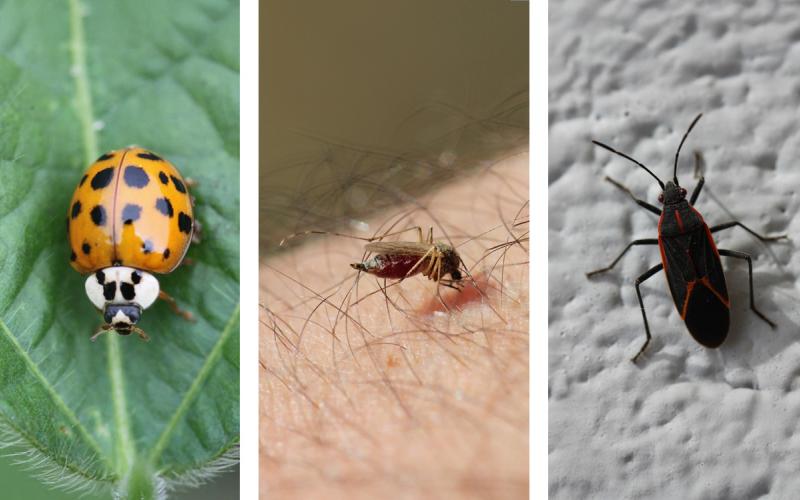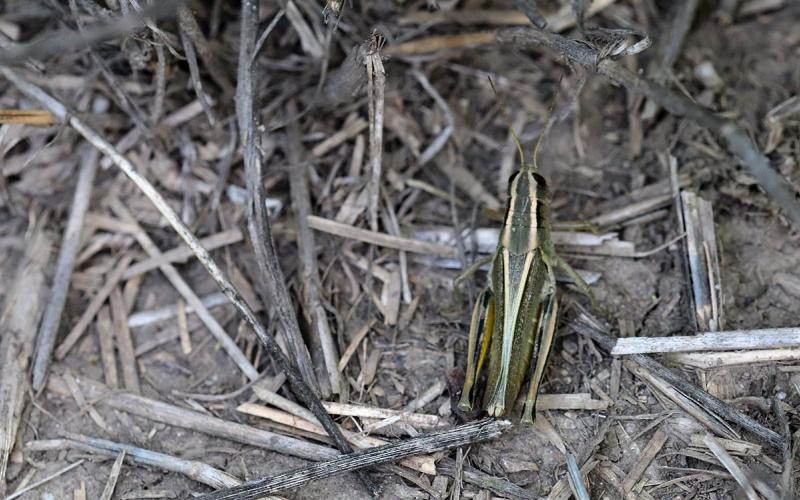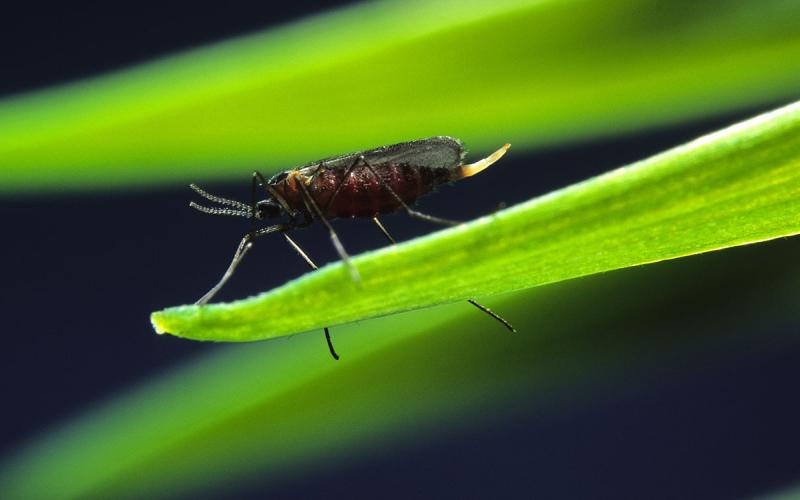Written with contributions by Shelby Pritchard, former SDSU Extension Pest Management Specialist.
Originally Submitted: June 9, 2022
We are starting to receive reports of aphid populations in wheat fields throughout much of South Dakota. So far, these populations are well below the economic threshold, but there is a potential for them to increase. At this point in the season, weekly scouting is the best bet to monitor the populations.
Aphid Identification
Bird Cherry Oat Aphids
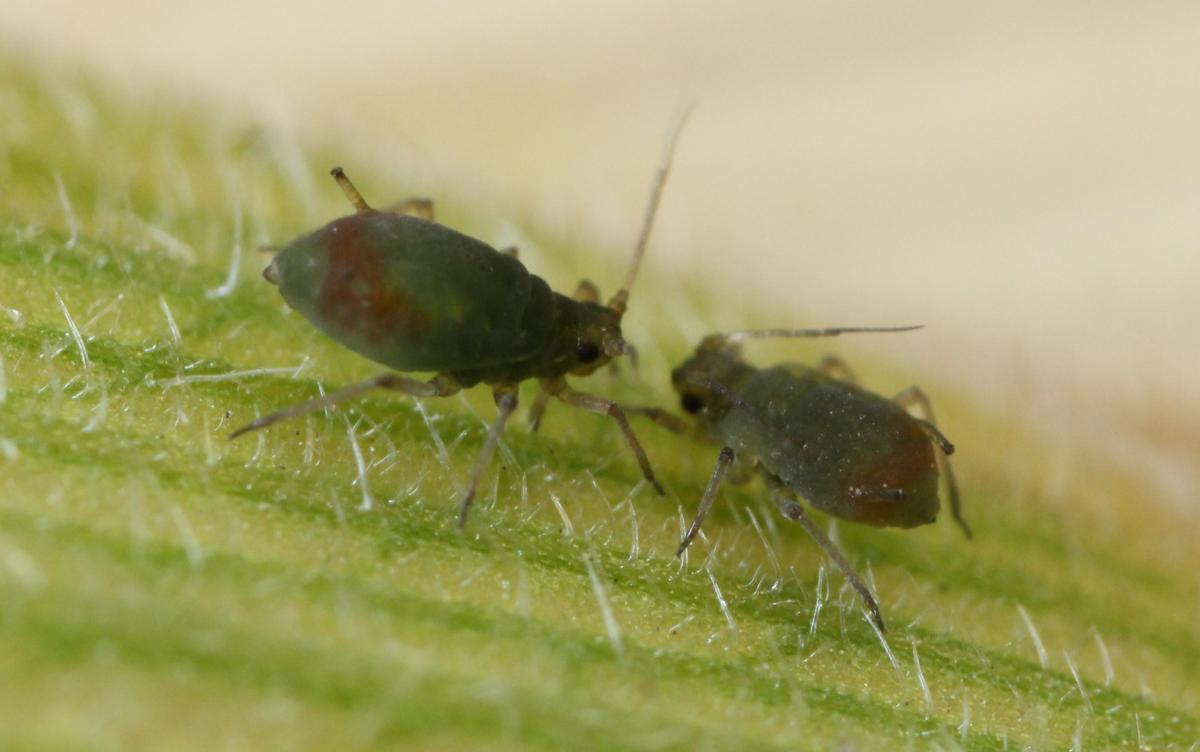
Bird cherry oat aphids can vary in color from olive to dark green and can be identified by the characteristic burnt, red-orange patch that is present on the end of the abdomen near the cornicles or “tailpipes” (Figure 1).
English Grain Aphids
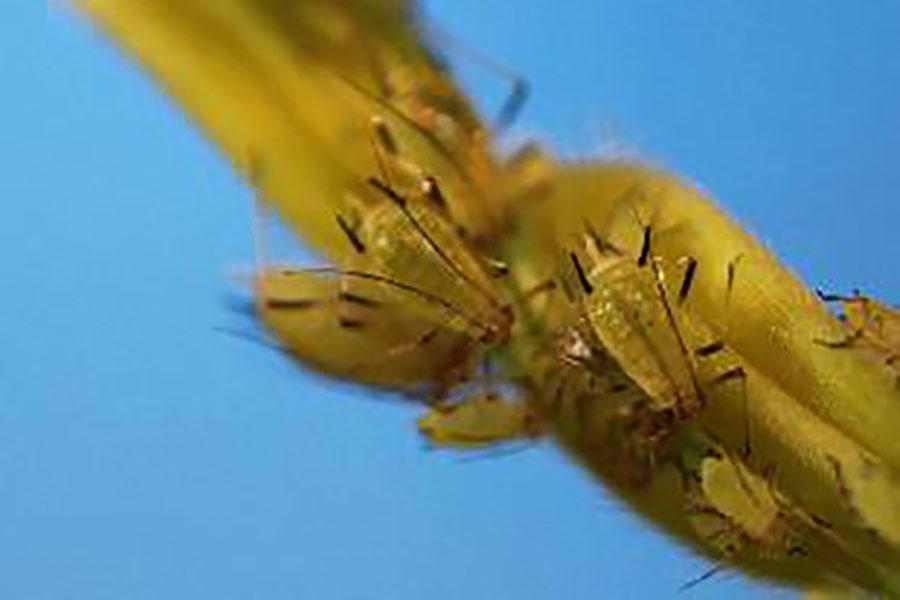
English grain aphids can vary in color from light or dark green to brown and can be identified by characteristic black antennae, cornicles and leg joints (Figure 2).
Greenbugs
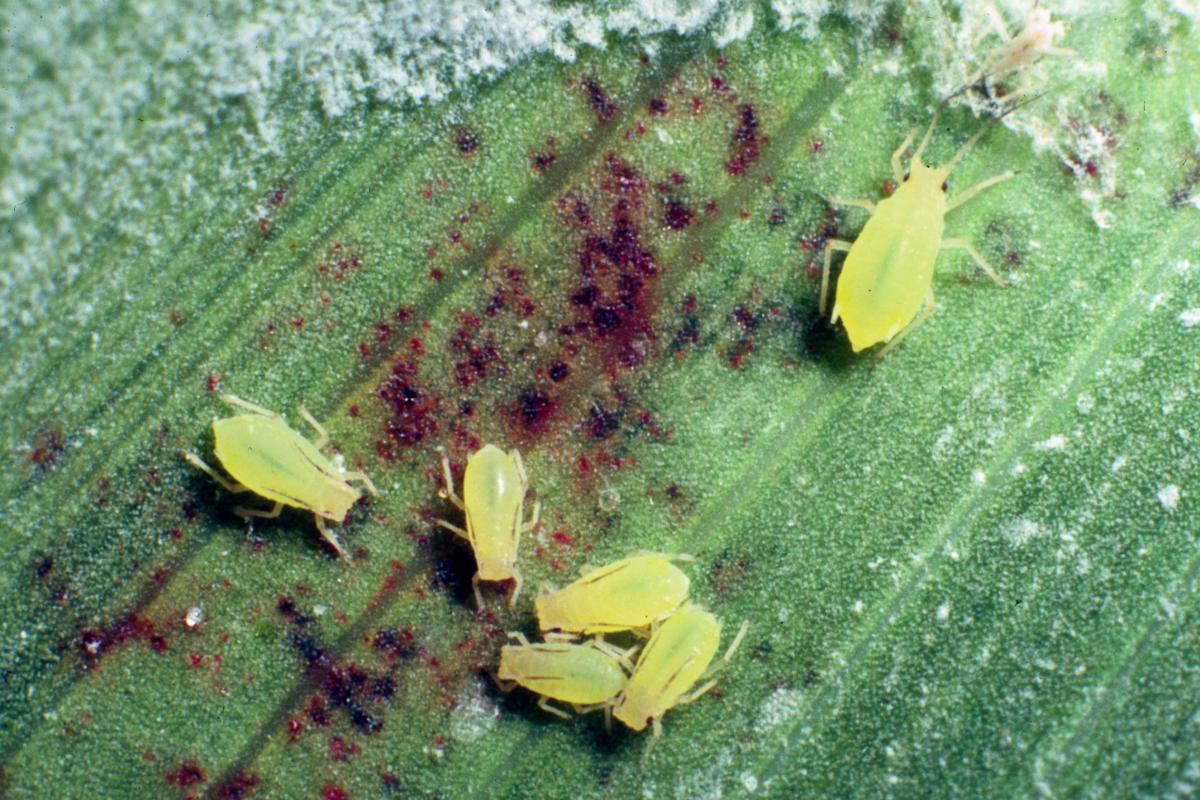
Greenbugs are a species of aphid that are light green in color and can be identified by the dark green stripe present on their back. Feeding by this species causes yellow discoloration and red spots on the leaves, due to a toxin present in its saliva (Figure 3).
Scouting for Aphids in Wheat
The easiest way to scout for aphid populations in wheat is to start at one side of the field and walk in a “W” or zig-zag pattern. While walking the pattern, randomly choose twenty plants from each leg and examine for aphids. During the spring, the aphids are most observed on the leaves and stems of the plants. Table 1 contains the economic thresholds for the three aphid species that we observe on wheat in South Dakota.
If populations exceed the thresholds, please refer the most-current edition of the South Dakota Pest management Guide: Wheat. The forecasted temperatures for the next week will be favorable for aphid development in wheat. Also, it is important to remember that treating wheat when aphids are well below the threshold does not ensure season-long suppression. These prophylactic treatments may result in aphid increases over time, as insect predators are removed in addition to any aphids that are present.
| Pest |
|
||||
|---|---|---|---|---|---|
|
|
Stage |
Stage |
Stage |
Stage |
Dough Stage |
| Bird Cherry Oat Aphid |
|
|
|
|
|
| English Grain Aphid |
|
|
|
|
|
| Greenbug |
|
|
|
|
|
